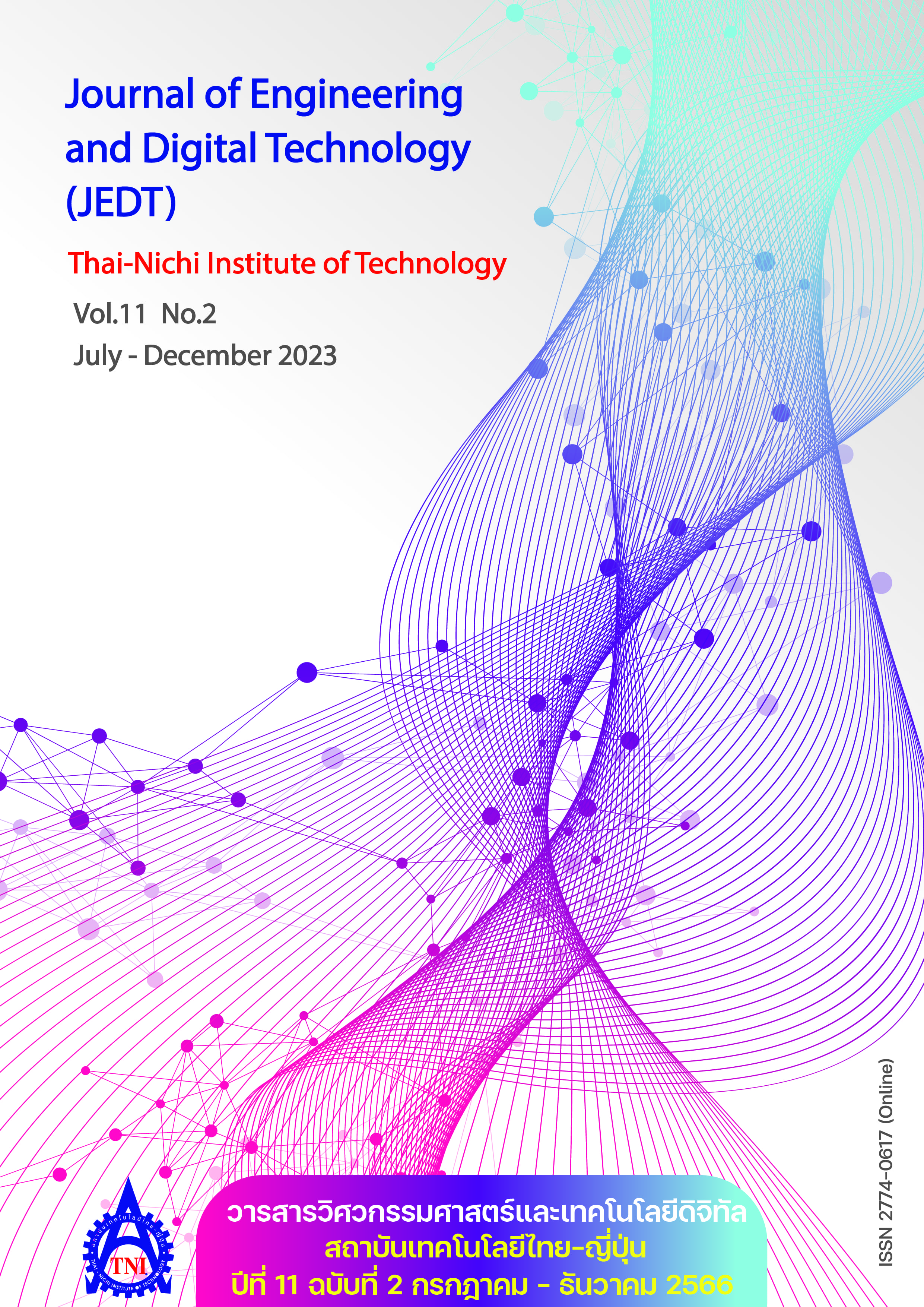Economic Rebar Order Quantity Model for Construction Project
Main Article Content
Abstract
Planning and ordering construction materials is a highly complex problem in the construction industry as it has to order the right type of material in the right quantity and at the right time. Otherwise it will cause losses and consequences. This study is to develop an Economical Order Quantity Model for Construction Projects. By reducing the limitation of the current method to calculate by ordering the same amount every time and have the same frequency this may result in higher expenses, for example the cost of storing the remaining rebar after ordering in excess of daily demand. Therefore, the researcher has studied and developed a Modified Economic Order Quantity Model in order to calculate the timing of ordering rebar in accordance with the project schedule to reduce the ordering cost, holding cost, delivery cost, handling cost, opportunity cost, penalty cost, indirect cost and idling cost and reduce delays in construction activities by using a Genetic Algorithm to help find the best answer for the time and quantity to order construction materials. This method has the advantage of helping to find the closest answer to the best answer can find the trend of improved answers and help create a plan for ordering steel bars in many forms the above methods have been used to experiment with case study projects, both of which consider the fastest time and the case that takes into account the cheapest cost. It was found that the modified economic order quantity model method compared to EOQ with Planned Shortage and EOQ with quantity discounts found that it can help reduce the time and cost to be less.
Article Details

This work is licensed under a Creative Commons Attribution-NonCommercial-NoDerivatives 4.0 International License.
Article Accepting Policy
The editorial board of Thai-Nichi Institute of Technology is pleased to receive articles from lecturers and experts in the fields of engineering and technology written in Thai or English. The academic work submitted for publication must not be published in any other publication before and must not be under consideration of other journal submissions. Therefore, those interested in participating in the dissemination of work and knowledge can submit their article to the editorial board for further submission to the screening committee to consider publishing in the journal. The articles that can be published include solely research articles. Interested persons can prepare their articles by reviewing recommendations for article authors.
Copyright infringement is solely the responsibility of the author(s) of the article. Articles that have been published must be screened and reviewed for quality from qualified experts approved by the editorial board.
The text that appears within each article published in this research journal is a personal opinion of each author, nothing related to Thai-Nichi Institute of Technology, and other faculty members in the institution in any way. Responsibilities and accuracy for the content of each article are owned by each author. If there is any mistake, each author will be responsible for his/her own article(s).
The editorial board reserves the right not to bring any content, views or comments of articles in the Journal of Thai-Nichi Institute of Technology to publish before receiving permission from the authorized author(s) in writing. The published work is the copyright of the Journal of Thai-Nichi Institute of Technology.
References
T. Chupakdee. “Construction Project Management (CPM).” (in Thai), WORDPRESS.com. https://cmteerawut.wordpress.com (accessed Jan. 1, 2023).
N. Charoenchewakul, S. Kantabutra, and P. Sirisawat, “The comparative study of logistics cost in supply chain of bottled water factory and bottled mineral water factory,” (in Thai), J. Manage. Sci. Chiangrai Rajabhat Univ., vol. 10, no. 1, pp. 66–92, 2015.
C. Pinyopummin, D. Rinchumphu, and K. Arunothayanan, “Inventory management in small construction business,” (in Thai), in Proc. 25th Nat. Conv. Civil Eng., Jul. 2020, pp. CEM29-1–CEM29-7. [Online]. Available: https://conference.thaince.org/index.php/ncce25/article/view/669/148
D. R. Anderson, D. J. Sweeney, and T. A. Williams, An Introduction to Management Science Quantitative Approaches to Decision Making, 10th ed. Cincinnati, OH, USA: South-Western College Pub., 2003.
P. V. H. Son, N. H. C. Duy, and P. T. Dat, “Optimization of construction material cost through logistics planning model of dragonfly algorithm — Particle swarm optimization,” KSCE J. Civil Eng., vol. 25, pp. 2350–2359, Apr. 2021.
Newcastle Engineering Design Centre. “Roulette wheel selection.” EDC.NCL.ac.uk. http://www.edc.ncl.ac.uk/highlight/rhjanuary2007g02.php (accessed Mar. 16, 2023).
H. Said and K. EI-Rayes, “Optimizing material procurement and storage on construction sites,” J. Constr. Eng. Manage., vol. 137, no. 6, pp. 421–431, 2011.
M. Georgy and S. Y. Basily, “Using genetic algorithms in optimizing construction material delivery schedules,” Constr. Innov., vol. 8, no. 1, pp. 23–45, 2008.
Design and Construction Group, Office of the Basic Education Commission (OBEC). “Price list of construction materials and labor costs 2021.” (in Thai), YOTATHAI.com. https://www.yotathai.com/yotanews/cost-build-64 (accessed Dec. 31, 2022).
The Comptroller General's Department. “Middle price for construction.” (in Thai), CGD.go.th. https://saraban-law.cgd.go.th/easinetimage/inetdoc?id=show_CGD.A.18981_1_BCS_1_pdf (accessed Feb. 1, 2023).
ADMIN BUILK. “Construction Cost Proportion.” (in Thai), BUILK.com. https://www.builk.com/th/สัดส่วนต้นทุนก่อสร้าง_2018/ (accessed Jan. 1, 2023).
P. Thanatitri. “Interest Rate 2021.” (in Thai), KRUNGSRI.com. https://www.krungsri.com/Krungsri2020/media/Banking-Rate/rates-loans/th/interest-rates-loans-01042564-th.pdf (accessed Dec. 31, 2022).
M. Laotrakul. “Tower Crane Rental.” (in Thai), BTSTOWERCRANE.com. http://www.btstowercrane.com/uncategorized/tower-crane-wolff (accessed Jan. 31, 2023).
B. Suttamanatwong. “Minimum Wage rate 2022.” (in Thai), MOL.go.th. https://www.mol.go.th/อัตราค่าจ้างขั้นต่ำ (accessed Dec. 31, 2022).


